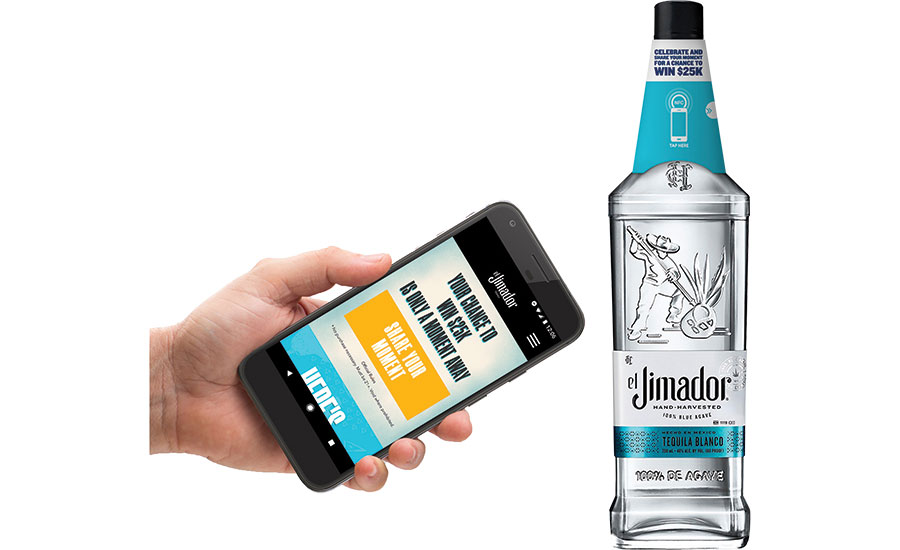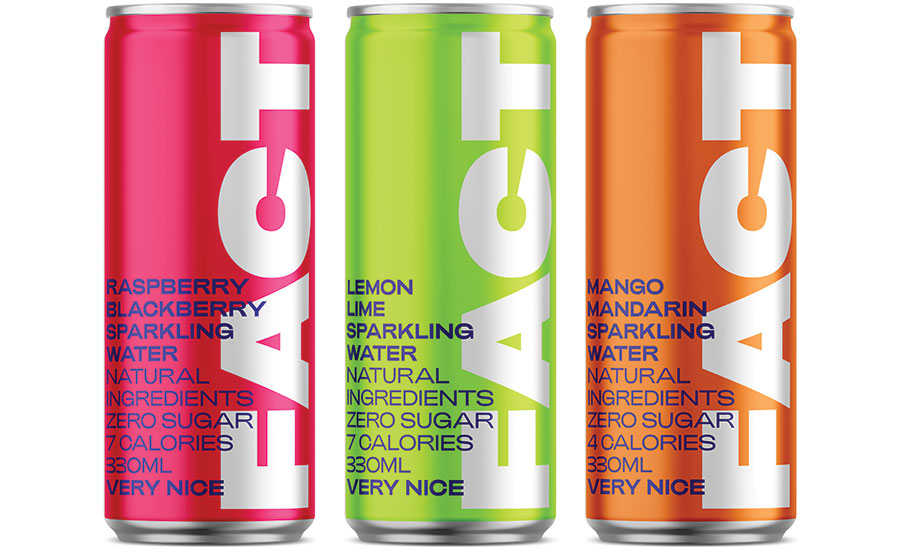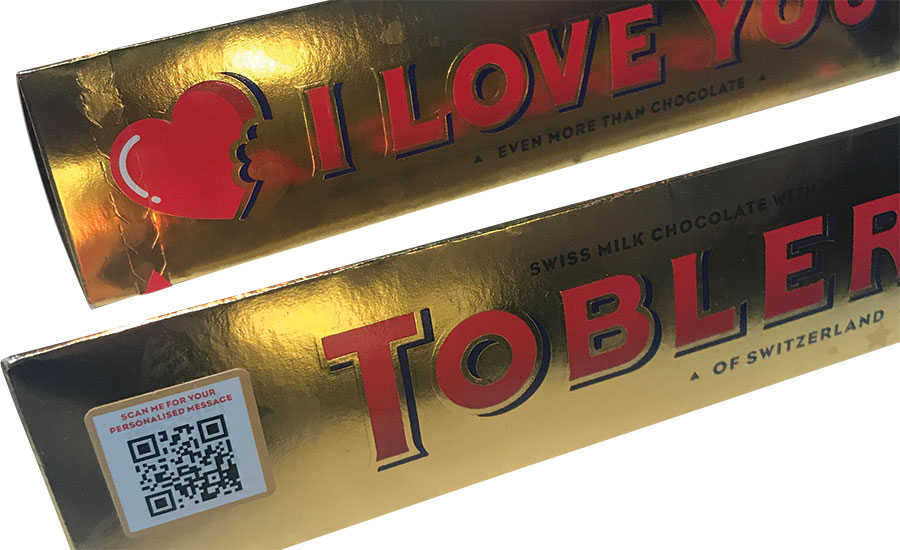Active and intelligent packaging platforms serve different roles. Active packaging acts directly with the packaged product by interacting with it chemically or biologically. It has an effect on the product in the pack to extend shelf life, maintain quality and inhibit microbial or fungal growth, or it provides information about the condition of a product.
Some examples include bio-chemical active films, antimicrobial packaging, oxygen, CO2, gas-scavenging, moisture control, anti-oxidation, temperature control and active labels for condition monitoring.
The aim of intelligent packaging is to detect and communicate information about the condition of the product without a direct action. It interacts with the retailer and supplier to provide information about the product or to trigger a response to an alert or command, but it mostly interacts with the consumer. Intelligent packaging is used to engage the consumer and discover information about consumption habits and patterns as well as to protect the purchaser and verify the product’s authenticity.
Some forms of intelligent packaging are sensors and tags, NFC and RFID technologies, printed electronics, augmented and virtual reality, IT software (IoT, blockchain, cloud), supply chain order and control, anti-theft devices, tamper proofing, anti-counterfeit systems, and transportation and logistics trackers.

Andrew Manly, communications director with the Active & Intelligent Packaging Industry Association (www.aipia.info), says that the list is growing as new ideas are being developed — such as mixed reality.
“It is also important to realize that some of these (both active and intelligent) are used in combination to achieve the desired result. So, track and trace can be used in conjunction with tamper evidence and/or other anti-counterfeit measures, while a shelf-life extension additive or coating can be used in conjunction with a condition monitoring device as well as promotional attributes.” he says.
According to Smithers Pira (smitherspira.com), the combined active and intelligent packaging market is forecast to grow at an annual average rate of 5.9 percent, hitting $7.56 billion by 2023. Although active packaging is a mature market and shows slower growth, its counterpart is at a developmental stage. The research firm says that five trends are pushing brands toward intelligent packaging:
- Consumer engagement through smart packaging
- Smart phones for brand protection
- Printed electronics for packaging
- Food waste and food energy
- Pharmaceuticals traceability regulation
AIPI’s Manly adds that brands are realizing the potential of their packaging as a marketing tool. “We see a lot more AR and VR coming on stream in 2019. With Apple’s new phones now being NFC-enabled, this whole area is set to explode as the number of users is huge and global.”
The expansion of e-commerce is making it easier to sell fake products, which means the need to authenticate products is even greater, he says. The regulatory landscape is also changing, as the FDA and DCA laws come into force in the EU and USA this year.
The AIPI has seen more interest from retailers regarding active packaging, as the universal need for less waste grows and the regulators start to “circle the wagons.” According to Manly, the biggest opportunity is in changing the way consumers use packaging and engage with the product (brand) through it. The following are a few examples of active and intelligent packaging solutions on the market today.
Unique Identity for Sparkling Beverage
Crown Bevcan Europe & Middle East (crowncork.com) has launched CrownConnect technology in conjunction with FACT, an all-natural sparkling drink. Each can will be marked with a unique, 2D scannable code, making FACT beverage cans the first to be produced with a unique digital identity. IoT company EVRYTHNG (evrythng.com) provided the software platform, which makes the whole thing work.

Crown partnered with entrepreneur Olly Bolton to launch Almond, a blockchain platform that allows consumers to scan the unique hidden product code and then get rewarded with tokens that are redeemable for cash. The platform was launched last June.
As well as producing the beverage can, CrownConnect provides the 2D codes beneath the tab, which facilitates the engagement between consumer (via a scanning application) and brand. The platform then comes into effect, intuitively generating rewards and offers based on previous purchases from the user’s habits and the products they buy.
|
Case Study: Digitalization Enables Personalized Gifting In November 2018, Kezzler (kezzler.com) and Amcor (amcor.com) partnered with Mondelēz to launch a Toblerone campaign that deployed innovative technology in order to elevate the consumer product experience. During the campaign, consumers could record a video message for a recipient. That message was linked to the consumer’s individual chocolate bar via a secure and unique ID, enabling personalized gifting. “The Toblerone campaign was all about lifting the experience of the product. By digitalizing the chocolate bar, the product was transformed into a shared experience between two people,” says Kezzler CEO Christine C. Akselsen.

Every Toblerone bar included in the campaign came with a QR code that had a unique identity. The 360g Toblerone bars also came with custom sleeves such as “To my Mom,” “To my BFF,” and “To Grandma.” By scanning the QR code using their phone, consumers were able to record a personalized video message to the person being gifted. When the recipient then scanned the same code, he or she could view the message and share the video on social media if so desired. “The ability to interact with a product is not simply a gimmick or a novelty but is fast becoming a driver of consumer loyalty and sales growth. In fact, business consultants Frost and Sullivan have projected that by 2020 customer experience will overtake price and product as a key brand differentiator. “Kezzler’s serialization technology enables real-time consumer engagement directly through the product. This can be a great way to build trust, increase loyalty and reward consumers instantly. Making a gift more memorable and personal helps bring consumers closer to one another, as well as to the brand,” says Akselsen. The Toblerone campaign followed a similar initiative last February when Kezzler and Amcor rolled out a Valentine’s Day campaign with Mondelēz using the MaXQ digital packaging system on boxes of Cadbury Milk Tray across 133 U.K. Tesco stores. The promotion, which asked consumers “What would you say with Milk Tray?” led to an increase in sales of 7 percent. “Kezzler’s patented, innovative and scalable technologies were developed to solve real-world problems. In 2019 up to 6 billion products will be carrying unique Kezzler codes, which are used by global brands worldwide in multiple industries including fast moving consumer goods, food and beverage, agriculture, luxury, industrial and pharmaceuticals to challenge counterfeit goods and unauthorized distribution, meet changing regulatory requirements and build consumer trust,” Akselsen explains. The company’s codes can be embedded into QR codes, NFC or other labels and placed on the product. Brands are also able to pre-serialize their products using MaXQ, the Amcor offering powered by Kezzler’s technology, which enables companies to digitalize their products with low operational burden. A unique code integrated into the product packaging is simply activated at a later stage via the cloud. |

Active Packaging in Pharma: Simple Solutions to Complex Challenges


